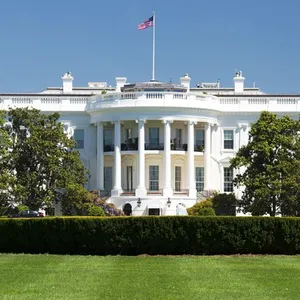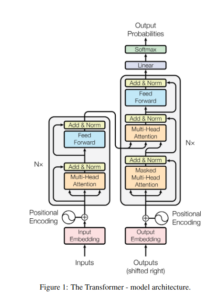
On May 3rd, Vice President Kamala Harris and other top administration officials met with the CEOs of four American businesses at the forefront of AI innovation. The White House meeting’s objectives were to explore worries about the possible threats posed by AI. Additionally, they wanted to underline the need on the part of businesses to make sure their products are secure and safe before they are used or released to the public.
President Biden also attended the meeting to stress the significance of reducing AI’s hazards to people, society, and national security, both now and in the future. These hazards relate to human and civil rights, safety and security, privacy, employment, and democratic principles.
Also Read: White House Calls Tech Tycoons Meet to Address the AI Threat
The Role of CEOs in Ensuring Responsible Behavior
Biden’s administrative officials stressed the significance of these CEOs’ participation. Given the part that their businesses and these CEOs play in the American ecosystem for AI advancement. They urged them to lead by example. Furthermore, they should act to ensure responsible innovation and implement the necessary safeguards to protect people’s rights and safety.

Three important topics were discussed candidly and constructively during the meeting between administration representatives and CEOs:
- Transparency: Businesses must be more open about their AI systems with the public, lawmakers, and other stakeholders.
- Evaluation: The significance of having the ability to assess, confirm, and validate the security, effectiveness, and safety of AI systems.
- Security: It’s essential to protect AI systems from hackers and other assaults.
Agreement on the Need for More Work
CEOs and representatives from the Administration concurred that more significant effort is required to create and guarantee necessary safeguards and protections. The AI leaders pledged to keep communicating with the Administration to ensure AI innovation benefits the American people.
Part of a Broader Effort to Engage on Critical AI Issues
The gathering was part of a larger, continuing initiative to engage on significant AI problems with activists, businesses, researchers, civil rights groups, not-for-profit organizations, communities, foreign partners, and others. The Administration has already made significant progress by promoting responsible innovation and risk reduction in AI.
Five Principles to Guide the Design, Use, and Deployment of Automated Systems
The government has been given the go-ahead by the Biden administration to pursue racial justice, civil rights, and equal opportunity. The White House Office of Science and Technology Policy has outlined five principles. These principles would help in directing the design, usage, and deployment of automated systems to safeguard the American people. These guidelines uphold American ideals and offer direction for adopting safeguards into practice and policy.

- Safe and Effective Systems: Automated systems should be both safe and effective. Additionally, they should be built after consulting with various communities, stakeholders, and subject-matter experts. This would help pinpoint issues, dangers, and potential effects. Pre-deployment testing, risk identification, mitigation, and continuous monitoring should be done to show system safety, efficacy, and conformity to standards.
- Protection Against Algorithmic Discrimination: Automated systems shouldn’t mistreat people for their protected traits; this would be illegal and unjustified. Automated system creators, developers, and implementers should take proactive steps to safeguard people and communities from such algorithmic prejudice and guarantee fair usage and design of these systems.
- Data Privacy: Automated methods should be created to safeguard people’s data agency and privacy. Such systems’ creators, developers, and implementers should ensure that only relevant data is gathered and secure users’ explicit consent before collecting, using, accessing, transferring, and erasing their data.
- Notice and Explanation: People should be made aware of the usage of automated systems and how it affects the results that influence them. Such systems’ designers, developers, and deployers should include clear, timely, and accessible plain language documentation that explains the system’s operation, the role of automation, notice of use, responsible parties, and explanations of results.
- Human Alternative, Consideration, and Fallback: Based on realistic expectations in a specific situation, people should have the option to reject automated technologies and access a human alternative.
The Importance of Responsible Innovation and Risk Mitigation in AI
Companies and politicians must prioritize responsible innovation and risk mitigation as AI develops and permeates society more and more. The CEOs and Administration representatives’ meeting serves as a reminder of how crucial it is for the public and private sectors to work together to maximize the advantages of AI while reducing the hazards of its use.
The White House Office of Science and Technology Policy’s principles offer a guide for creating, utilizing, and deploying automated systems that are secure, efficient, and fair. Thanks to the Biden administration, companies may help guarantee that their AI solutions serve people and society while preserving privacy, civil rights, and democratic ideals by adhering to these principles.
Related
- SEO Powered Content & PR Distribution. Get Amplified Today.
- PlatoAiStream. Web3 Data Intelligence. Knowledge Amplified. Access Here.
- Minting the Future w Adryenn Ashley. Access Here.
- Buy and Sell Shares in PRE-IPO Companies with PREIPO®. Access Here.
- Source: https://www.analyticsvidhya.com/blog/2023/05/what-came-out-of-ai-leaders-meet-with-the-biden-administration/
- :has
- :is
- 3rd
- a
- ability
- About
- access
- accessible
- accessing
- Act
- activists
- Additionally
- address
- administration
- administrative
- Adopting
- advancement
- advantages
- After
- against
- agency
- AI
- AI systems
- algorithmic
- already
- also
- alternative
- American
- and
- ARE
- AS
- At
- Automated
- Automation
- based
- BE
- been
- before
- benefits
- between
- biden
- Biden Administration
- both
- broader
- built
- businesses
- by
- Calls
- came
- CEOs
- Civil Rights
- clear
- Collecting
- communicating
- Communities
- Companies
- Confirm
- consent
- consideration
- consulting
- continuing
- continuous
- create
- created
- Creating
- creators
- critical
- crucial
- dangers
- data
- democratic
- deploying
- deployment
- Design
- designers
- developers
- develops
- directing
- direction
- Discrimination
- discussed
- documentation
- done
- during
- ecosystem
- Effective
- effectiveness
- effects
- efficacy
- efficient
- effort
- employment
- engage
- ensure
- ensuring
- equal
- essential
- example
- expectations
- experts
- Explains
- explanation
- explore
- fair
- Figure
- For
- forefront
- foreign
- four
- from
- Furthermore
- future
- gathering
- given
- Government
- Group’s
- guarantee
- guide
- guidelines
- hackers
- Have
- having
- help
- House
- How
- HTTPS
- human
- Identification
- Illegal
- implement
- importance
- important
- in
- include
- influence
- Initiative
- Innovation
- into
- issues
- IT
- ITS
- Justice
- Kamala Harris
- Keep
- language
- larger
- lawmakers
- lead
- leaders
- made
- make
- Maximize
- May..
- Meet
- meeting
- methods
- mitigation
- monitoring
- more
- most
- must
- National
- national security
- necessary
- Need
- Notice..
- now
- objectives
- of
- offer
- Office
- officials
- on
- only
- open
- operation
- Opportunity
- Option
- or
- organizations
- Other
- Others
- out
- outlined
- part
- participation
- parties
- partners
- People
- people’s
- Plain
- plato
- Plato Data Intelligence
- PlatoData
- Play
- policy
- Politicians
- possible
- potential
- practice
- president
- principles
- Prioritize
- privacy
- private
- Proactive
- problems
- Products
- Progress
- promoting
- protect
- protected
- public
- pursue
- Read
- realistic
- reducing
- reduction
- released
- relevant
- Representatives
- required
- researchers
- responsible
- Results
- rights
- Risk
- Risk Mitigation
- Role
- safe
- safeguards
- Safety
- Safety and Security
- says
- Science
- Science and Technology
- Sectors
- secure
- security
- serve
- serves
- should
- show
- significance
- significant
- situation
- Society
- Solutions
- specific
- stakeholders
- standards
- Steps
- stress
- such
- system
- Systems
- Take
- tech
- Technologies
- Technology
- Testing
- thanks
- that
- The
- The Future
- their
- Them
- These
- they
- this
- threats
- to
- together
- top
- Topics
- Transferring
- underline
- Uphold
- Usage
- use
- used
- using
- Utilizing
- VALIDATE
- various
- Vice President
- wanted
- was
- webp
- were
- What
- while
- white
- White House
- with
- Work
- work together
- would
- zephyrnet











